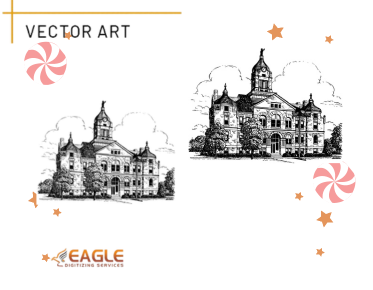Plywood Perfection: Easy Steps to Screen Print Like a Pro/Eagle Digitizing
Screen printing on plywood opens up a world of creative possibilities. Whether you’re an artist, a DIY enthusiast, or just looking to try something new, this technique offers a unique way to transfer designs onto wood. It’s a blend of art and craftsmanship, resulting in beautiful, durable prints. If this post piqued your curiosity and you wish to learn more about vector conversion, feel free to reach out to us.
Why Screen Print on Plywood?
Screen printing on plywood is not only innovative but also offers a tactile, rustic charm that other surfaces can’t match. The texture and grain of the wood add character to your prints, making each piece truly one-of-a-kind.
Unique and Creative Applications
From custom signs and wall art to furniture and decorative panels, the applications of screen-printed plywood are endless. You can create personalized gifts, enhance home décor, or even start a small business selling your creations. The versatility of plywood combined with the artistic flair of screen printing makes for stunning results.
Getting Started: What You’ll Need
Before you dive into screen printing on plywood, gather all the necessary materials and tools. Preparation is key to ensuring a smooth printing process and achieving high-quality results.
Materials and Tools for Screen Printing on Plywood
Here’s a list of essentials to get you going:
● Plywood sheets
● Sandpaper (various grits)
● Primer (optional)
● Screen printing frame and mesh
● Emulsion and emulsion remover
● Squeegee
● Screen printing inks suitable for wood
● Design stencils or transparencies
● A light source for exposing the screen
● Workstation setup (table, protective coverings, etc.)
Choosing the Right Plywood
The type of plywood you choose can significantly impact the quality of your print.
Types of Plywood: Which is Best for Printing?
Birch and maple plywood are popular choices due to their smooth surfaces and fine grain. These types provide an excellent base for screen printing, allowing for detailed and crisp prints. Avoid rough or heavily textured plywood, as it can interfere with the printing process and result in uneven prints.
Preparing Your Plywood Surface
A well-prepared surface is crucial for a successful print.
Sanding and Smoothing for a Perfect Print
Sand the plywood to achieve a smooth surface. Begin with a coarse grit sandpaper to remove any rough spots, then gradually move to a finer grit for a silky finish. Wipe off any dust with a damp cloth before proceeding.
Priming the Plywood: To Prime or Not to Prime?
Priming can help the ink adhere better and provide a more vibrant print. However, it’s not always necessary. If you want a more natural look that showcases the wood grain, you can skip this step. If you do prime, choose a clear or white primer for best results.
Creating Your Design
Your design is the heart of your screen printing project. Whether you create it digitally or by hand, ensure it’s bold and clear.
Design Tips for Screen Printing on Wood
Keep your design simple and high-contrast. Intricate details may get lost in the wood grain, so bold lines and shapes work best. Remember to account for the wood's texture, which can add a unique element to your design.
Digital vs. Hand-Drawn Designs
Both methods have their merits. Digital designs offer precision and ease of reproduction, while hand-drawn designs bring a personal touch and organic feel. Choose the method that best suits your style and the look you’re aiming for.
Making the Screen
Creating the screen is a critical step in the screen printing process.
Selecting the Right Screen Mesh
For plywood, a screen mesh with a lower count (around 110-160) is ideal. It allows more ink to pass through, ensuring better coverage on the wood’s surface.
Coating the Screen with Emulsion
Apply a light-sensitive emulsion evenly across the screen. This will create a stencil of your design once exposed to light. Ensure an even coating to avoid inconsistencies in your print.
Transferring Your Design to the Screen
Place your design on a transparency and position it on the screen. Expose it to a strong light source to harden the emulsion around your design. After exposure, rinse the screen with water to reveal your stencil.
Setting Up Your Work Area
An organized workspace can make the printing process smoother and more enjoyable.
Organizing Your Space for Efficiency
Set up a dedicated area for screen printing with plenty of space for your materials. Cover your work surface to protect it from ink spills. Have all your tools within easy reach to streamline the process.
Safety Precautions and Tips
Wear gloves and an apron to protect your skin and clothes from ink. Ensure good ventilation, especially if you’re using solvents or other chemicals. Keep a first-aid kit handy in case of an accident.
Mixing Your Inks
The right ink can make or break your print.
Choosing the Right Ink for Wood
Use inks specifically designed for wood to ensure proper adhesion and durability. Acrylic-based inks are a good choice, offering vibrant colors and long-lasting prints.
Getting the Perfect Consistency
Your ink should be smooth and easy to spread but not too runny. If it’s too thick, add a small amount of water or ink thinner. Mix thoroughly to achieve the right consistency.
Test Printing
Before committing to your final print, it’s wise to do a test run.
Importance of a Test Print
A test print helps you identify any issues with your setup, such as screen alignment or ink consistency. It’s a crucial step to avoid wasting materials and ensure your final print is perfect.
Adjusting Your Technique Based on Test Results
Based on your test print, make any necessary adjustments. This might include changing the pressure you apply with the squeegee, tweaking the ink mixture, or re-aligning your screen.
The Printing Process
With everything set up and tested, you’re ready to print.
Aligning Your Screen on the Plywood
Carefully align your screen over the plywood to ensure your design is straight and centered. Use registration marks if needed for precise placement.
Applying the Ink: Techniques for Success
Pour a line of ink at the top of your screen. Hold the squeegee at a 45-degree angle and pull the ink across the screen with even pressure. Repeat the stroke if necessary to ensure full coverage.
Drying and Curing
Proper drying and curing are essential for a durable print.
Drying Methods for Plywood Prints
Allow your print to air dry in a dust-free environment. Depending on the ink and environmental conditions, this can take several hours.
Ensuring a Long-Lasting Print
For added durability, cure the print by applying gentle heat. A heat gun or hairdryer can speed up the drying process and set the ink more firmly.
Cleaning Up
Clean-up is a vital part of screen printing to maintain your tools and ensure they last.
Proper Screen Cleaning Techniques
Immediately after printing, wash your screen with water to remove all ink. Use an emulsion remover if needed to clean any remaining emulsion.
Storing Your Materials for Future Use
Store your screens flat or upright in a dry area. Keep your inks sealed tightly to prevent them from drying out. Organize your tools and materials for easy access during your next project.
Troubleshooting Common Issues
Even with careful preparation, issues can arise. Here’s how to handle them.
Dealing with Smudges and Bleeding
Smudges and bleeding are often caused by too much ink or excessive pressure. Use less ink and apply even, gentle pressure with the squeegee.
Fixing Uneven Prints
Uneven prints can result from an uneven surface or inconsistent pressure. Ensure your plywood is smooth and apply consistent pressure during printing.
Advanced Techniques
Once you’ve mastered the basics, explore advanced techniques to enhance your prints.
Layering Colors and Designs
Layering multiple colors and designs can create complex, eye-catching prints. To avoid smudging, let each coat dry completely before applying the next one.
Adding Textures and Special Effects
Experiment with adding textures, such as metallic inks or raised elements, to give your prints a unique look and feel.
Inspiration and Ideas
Looking for inspiration? Here are some creative projects using screen-printed plywood.
Creative Projects Using Screen-Printed Plywood
● Custom furniture pieces with intricate designs
● Decorative wall art panels
● Personalized signs and plaques
● Unique shelving units
Showcasing Your Work
Once you’ve created your masterpieces, show them off! Share your work on social media, participate in local craft fairs, or even set up an online shop.
Caring for Your Screen-Printed Plywood
Proper care ensures your prints stay vibrant and beautiful for years.
Maintaining the Print’s Vibrancy
Keep your prints out of direct sunlight to prevent fading. Dust them regularly with a soft cloth to maintain their appearance.
Protecting the Surface
Apply a clear sealant or varnish to protect the print from scratches and wear. This adds a layer of durability and enhances the color and texture.
Screen printing on plywood is a rewarding and creative process that yields stunning results. From selecting the right plywood to applying the final sealant, each step is crucial to achieving a beautiful print. Eagle Digitizing offers vector graphics conversion services.
With practice, you’ll master the art of screen printing on wood. Don't be hesitant to try out new designs, colors, and styles. Each project is a learning opportunity and a chance to express your creativity.
Ready to dive in? Gather your materials, set up your workspace, and start your screen printing adventure today. The possibilities are endless, and the results are uniquely yours. Happy printing!



